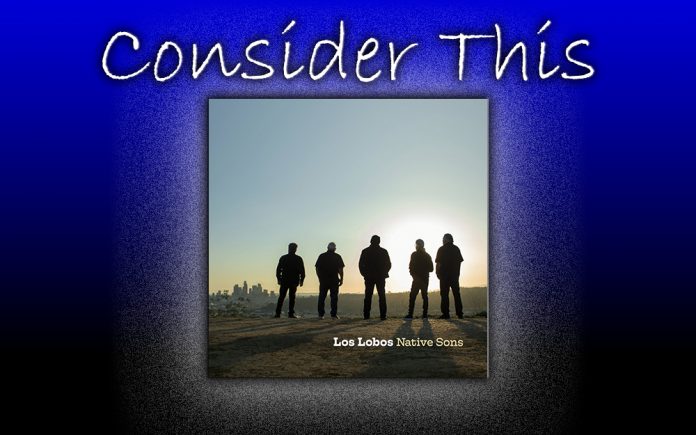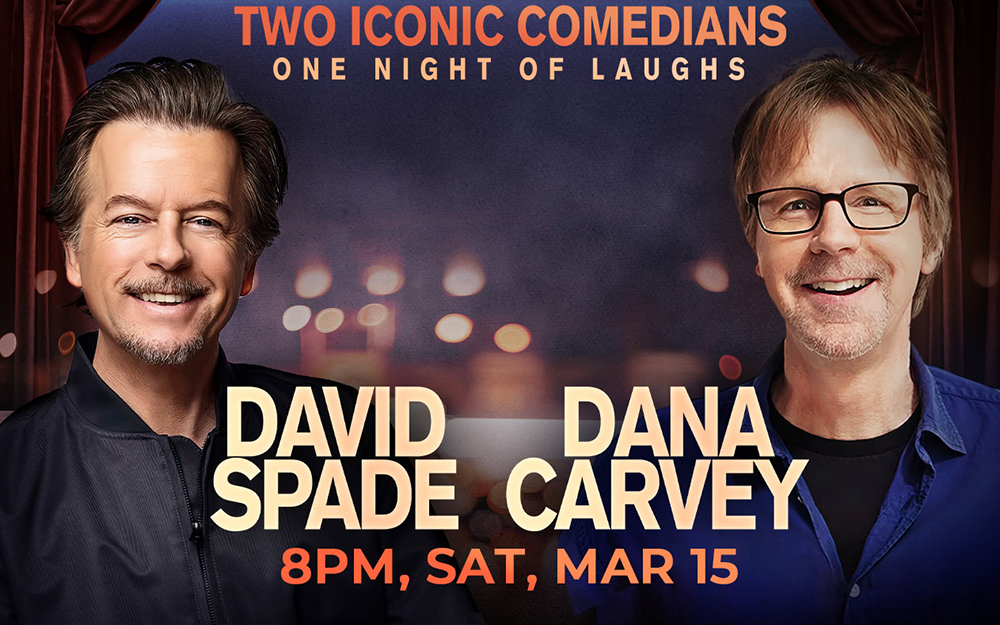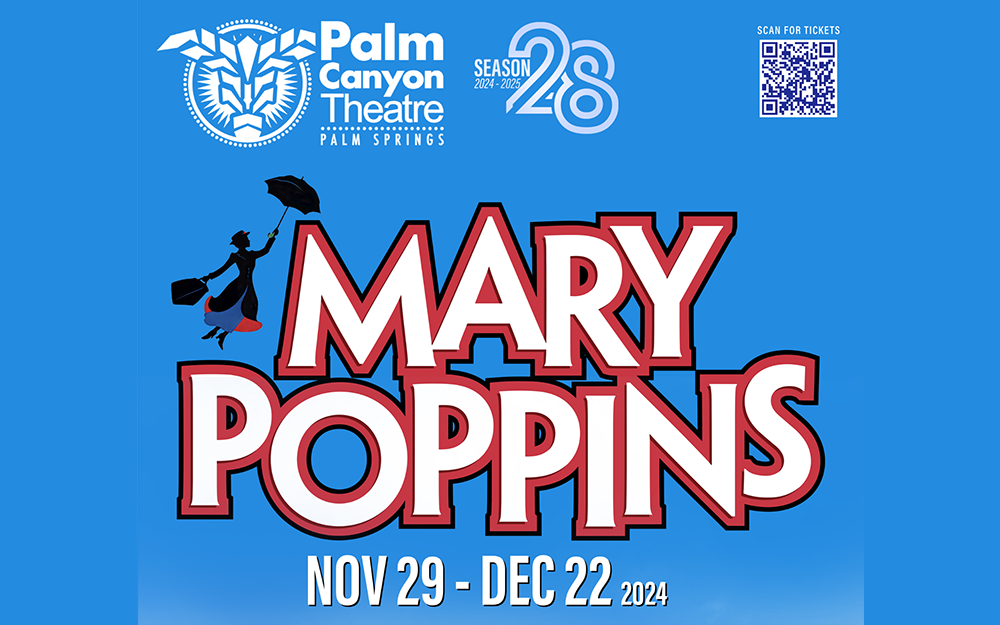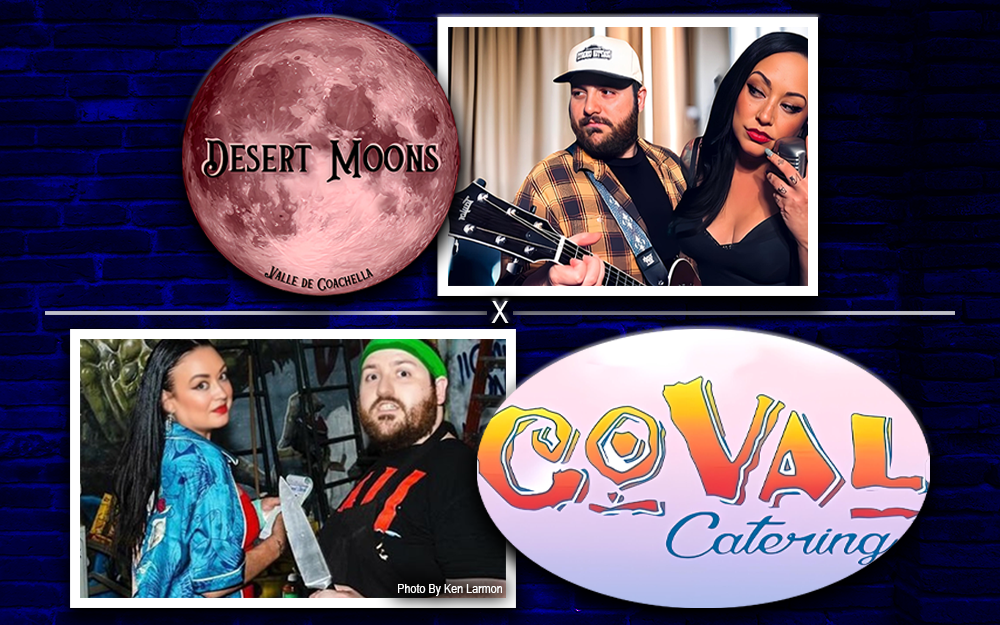
By Eleni P. Austin
In 2019, after nearly 50 years together, Los Lobos was close to calling it quits. The legendary East L.A. band was originally founded on the friendship of David Hidalgo and Louis Perez. They first became acquainted when the teenagers were both attending Garfield High. Each had erroneously assumed he was the only long-haired “weirdo” in the school. Their friendship was cemented over their shared passion for artists like Jimi Hendrix, Ry Cooder, and Fairport Convention, an affinity for Free Jazz, along with the sly and subversive humor of Firesign Theatre and Monty Python.
In 1973, just a couple years out of school, they began making music on a borrowed reel-to-reel recorder. David on guitar and vocals, Louis on Jarana (a small Mexican guitar) and drums. They quickly recruited former classmates Cesar Rosas for additional guitar and vocals and Conrad Lozano for bass duties. Originally, they were known as Los Lobos del Este (de Los Angeles), which translated from Spanish meant The Wolves Of East Los Angeles. When that proved a tad unwieldy, it was truncated to Los Lobos.
The four-piece made their bones playing anywhere and everywhere. Not only bars and clubs, but neighborhood parties, Quinceneras, Mexican restaurants and weddings. Almost immediately they became bored recycling the usual Top 40 hits and began incorporating the traditional Mexican styles they’d grown up listening to, injecting it with a Rock & Roll sensibility.
Their self-titled debut, a.k.a. Just Another Band From East L.A., was recorded in-between day jobs and consisted of traditional Mexican favorites like “Guantanamera” and “Sabor A Mi.” By the time it arrived in 1978, the Wolves had taken notice of the burgeoning Punk scene happening practically in their backyard.
Punk exhibited an energy and stylistic freedom that completely appealed to Los Lobos. They quickly carved out a niche in the community. They also found ride-or-die allies in a couple of like-minded bands, X and The Blasters. Both groups were testing the boundaries of Punk by exploring Rootsier sounds. The Wolves’ first big show at the Olympic Auditorium. was as opening act for John Lydon’s post-Sex Pistols band, Public Image Limited. They went on to play infamous spots like Cathay de Grande, Madame Wong’s and the Whisky A Go-Go. X and The Blasters had inked deals with the indie label Slash and actively lobbied to have Los Lobos added to the roster. Slash offered to finance an EP.
….And A Time To Dance arrived in 1983. It featured four original songs and three covers, two of which were sung entirely en espanol. Co-produced by T-Bone Burnett and Blasters’ saxophonist Steve Berlin (who soon quit the Blasters to make Los Lobos his full-time gig), the Wolves unPunked it up on instruments like guitarron, accordion and bajo sexto. The music cognoscenti took notice and along with rave reviews, the guys won their first Grammy for Best Mexican-American Performance.
Sales from the EP allowed the band to buy a van and book a low-budget U.S. tour. Exploring America one dingy club at a time provided great fodder for their first full-length record. Back in the studio with T-Bone, they created their first masterpiece, 1984’s How Will The Wolf Survive?
Musically, the album was a potent combo-platter of Roots-Rock, Country, Mexican Nortenos, Folk, Tex-Mex and Soul. Lyrically, songs like the title track and “A Matter Of Time” offered sharp and incisive commentaries that cut across class lines and cultural divides.
As the band became the toast of L.A. they graduated to larger clubs like The Palace and cavernous ballrooms like the Hollywood Palladium. Every show felt like a block party for Garfield High’s favorite sons. Mohawked Punks stood alongside Pendleton-clad Vatos and elderly abuelitas, simultaneously rocking out to the Wolves’ supercharged version of Vicente Fernandez’s classic weeper, “Volver-Volver.”
While the guys were recording their deft sophomore effort, By The Light Of The Moon, they were approached with an offer to record songs for an upcoming Ritchie Valens movie, “La Bamba.” Actually, the Valens family was adamant that no other musicians would do. Clearly, Los Lobos were carrying the torch lit by one of L.A.’s Chicano Rock pioneers, who was tragically killed, along with the Big Bopper Rock pioneers, who, along with the Big Bopper and Buddy Holly, was tragically killed in a plane crash in 1959.
Even as they were making their own record, they managed to honor the Valens family request, recording classic hits like “Come On Let’s Go” and the title track. Both released in 1987, By The Light… garnered excellent reviews and respectable sales, but the movie soundtrack became a commercial powerhouse. It climbed to #1 on both the Singles and Album charts, ultimately achieving double platinum sales. Los Lobos were suddenly superstars, but their success felt bittersweet since it was music they didn’t create themselves. Their raised profile became a double-edged sword. New admirer might mistake them for an Oldies cover band, meanwhile, longtime fans wondered if Garfield High’s weirdest sons might abandon their sui generis sound for the lure of easy money. Luckily, the guys followed their muse and recorded La Pistola Y El Corazon, an album of original Mexican Folk songs. Released in 1988, critical acclaim was unanimous and their loyal songs. Released in 1988, it received rave reviews and their loyal fan-base was delighted Although it didn’t reach the heights of the La Bamba soundtrack, it was seen as a declaration of independence. The band would never be pigeonholed as an Oldies act.
The next two decade found the band shifting from the familiar with their 1990 long-player, The Neighborhood to the wildly experimental and critically acclaimed Kiko from 1992. That opened the door for more adventurous efforts like 1996’s Colossal Head and 1999’s This Time.
Throughout the first decade of the 21st century, each of the guys toggled between side projects like Latin Playboys, Hound Dog and Los Super Seven and recording and touring behind solid Wolves albums like Good Morning Aztlan, The Ride, The Town And The City and Tin Can Trust They collaborated with Lalo Guerrero, the undisputed father of Chicano Rock, on a kids’ album, Papa’s Dream and took a pass at select Disney classics on Los Lobos Goes Disney. They even recorded a holiday record, Llego Navidad. Their brilliant Gates Of Gold album arrived in 2015, the same year Chris Morris wrote a career-defining book about the band.
This new record almost didn’t come to pass. The band had been averaging nearly 100 live dates each year for the last 20 years. concentrate on writing new music, they would record an album of covers that would pay homage to their hometown. All the guys are eligible for AARP and the constant touring has taken its toll. Physically exhausted and mentally taxed, each of them wondered if Los Lobos had reached the end of the road. The pandemic rendered that question moot. The Covid shutdown allowed Los Lobos their first extended period off since the early ‘80s. Collectively, they decided rather than concentrate on writing new music, they would record an album of covers that would pay homage to their hometown. The result is their 17th long-player, Native Sons.
The record crackles to life with a driving take on Thee Midnighters’ “Love Special Delivery.” Pounding drums collide with thready-throbby bass lines, zig-zaggy guitars and a punchy horn section. Cesar’s vocals strut and swagger on this Chicano Rock classic, even as he pines for a lost (and found) love; “She went on out the door yeah, she did, didn’t have much to say/She packed her bag and left went on her way-yeah, she broke my heart.” It’s clear that Ike Turner purloined the Midnighters’ swinging horn arrangement five years later for his and Tina’s epochal version of “Proud Mary.” Sinewy guitars skitter and strafe through the break, adding some requisite machismo to the mix.
Three songs evoke those hazy L.A. days of the late ‘60s and early ‘70s. Unable to decide which Buffalo Springfield song to cover, the Wolves devised a medley. Stinging electric guitars are matched by sunny acoustic notes, choogling bass lines and a conga-fied beat on “Bluebird.” David Hidalgo takes the reins vocally and also manages to recalibrate Stephen Stills and Neil Young’s signature guitar solos, adding grit and groove in equal measure. The song’s banjo-esque coda is utilized a bridge, allowing them to effortlessly segue into “For What It’s Worth.” This is the song that instantly captured the zeitgeist of teenage rebellion on the Sunset Strip. From its pa-thumping rhythm, braided acoustic licks and keening electric notes, it feels as foreboding today as it did back in 1966. Lyrically, it’s aged gracefully, lines like “There’s battle lines being drawn, nobody’s right, if everybody’s wrong, young people speaking their minds, getting so much resistance from behind,” could describe the Black Lives Matter movement as easily as it conjures up imagery from 55 years ago. Jagged electric riffs frame each verse, adding an extra dose of socially conscious angst. Conrad Lozano has always been a big Beach Boys fan, so it felt like a no-brainer to include a song from the band that introduced the Cali lifestyle of sand, surf and sun to the rest of America. But rather than cherry-pick from their early, ebullient hits, Los Lobos take a run at “Sail On Sailor,” a deep cut from the early ‘70s. The arrangement is anchored by tremulous piano notes, swaying guitars, angular bass, warm Hammond B3 and a see-saw beat. As the melody ebbs and flows, lyrics chart a nautical course that mirrors life’s highs and lows; “I wrest the waters, fight Neptune’s waters, sail through the sorrows of life’s marauders/unrepenting, often empty, sail on, sail on sailor.” The song winds down with a Blues-inflected solo.
Meanwhile, “Jamaica Say You Will” dates back to the days when David and Louis expanded their horizons and their consciousness playing records for each other in their childhood bedrooms. The opening cut on Jackson Browne’s self-titled debut, the song is tender and tentative with David and Louis trading verses and harmonizing on the choruses, much as they must have back in the day. Plangent and piquant guitars envelope feathery keys, insistent bass and a brushed beat. Yearning lyrics offer a master class in equivocation; “Jamaica was a sweet young one I loved her true, she was a comfort and a mercy through and through/Hiding from this world together, next thing I knew, we had brought her things down to the bay, what could I do.”
Plenty of L.A. bands are known for their mellow vibes and peaceful easy feelings, but Los Lobos has always offered a rollicking good time. Consequently, this record is dotted with rockers and rave-ups, beginning with Barrett Strong’s “Misery.” Although the Motown pioneer, best known for his 1959 hit, “Money,” he didn’t move to L.A. until the label relocated in the early ‘70s. This mid-tempo lament is powered by rumbling guitars, shivery keys, loose-limbed bass and a rattle-trap rhythm. David’s lacerating vocals limn the limits of the lyrics’ lovelorn despair; “Day and night, I pace the floor, hoping I’ll be happy once more, my life’s an up, and it’s such a shame, I lost my girl and have no one to blame.” On the break, he unleashes a caustic and cathartic guitar solo on the break, that almost assuages the hurt.
The Wolves also resurrect “Farmer John,” a nugget that goes back to their wedding band days. Originally recorded by Don & Dewey, this 1964 artyfact became a huge hit for local Chicano Rockers, The Premiers. Souped-up and smokin,’ the song is propelled by walking bass lines, distorto guitars and stuttery, syncopated horns. Cesar and David’s Doo-Wop flavored vocals vocals coalesce around a tortured story of faithless love; “Farmer John, I’m in love with your daughter, oh the one with the champagne eyes, she knows that I love her, ever since she tells me lies.” Steve ups the ante on the break when he lets loose with a wailing sax solo.
Percy Mayfield is probably best known for writing “Hit The Road Jack,” which became a signature song for Ray Charles, but the L.A. denizen was a talented R&B singer in his own right until a car accident cut short his career as a performer. The band tackle a lesser-known favorite, “Never No More.” While the original leans closer to the Big Band era, Los Lobos’ arrangement opens with a walloping backbeat that’s quickly supplanted by blazing guitars, baritone sax, woozy keys, and thrumming bass. Their version lands somewhere between Jump Blues and Swamp Rock. The lyrics offer up a bitter kiss-off; “Girl, you really thought you played your hand, when you put me down for that other man, the joke’s on you because you found out/You had me hooked once baby but you’ll never get the chance no more, never no more.” On the break, Steve channels his inner- Bullmoose Jackson by whipping and whips out a honking solo that rides roughshod over some phlange-y guitar, a final drum salvo ushers the song to conclusion.
Meanwhile, “Flat Top Joint” finds the wolves offering a brotherly big-up to their to contemporary compadres, The Blasters. They have always credited the Downey four-piece with giving them their first big break, so it feels wildly apropos that they knock out a muscular version of this Roadhouse Rocker. Stripped-down and economical, their arrangement doesn’t veer too far from the original. A blast of skronky sax lines up with slashing guitars, tensile bass and a hopscotch beat. Lyrics gleefully pay homage to the perfect dive bar; “Down at the end of the freeway, just behind some laundromat, there’s a real gone little night spot, just for real gone cats, it’s called the Flat Top Joint, the Flat Top Joint.” In and out in less than two and a half minutes, the break pairs howling sax notes with wicked guitar riffs.
The best songs here continue to pledge allegiance to their Latin roots. First up is Lalo Guerrero’s pulsating Rumba, “Los Chucos Suaves.” Widely hailed as the Father of Chicano Rock, he was the first to match Spanish lyrics to Rock, Boogie-Woogie and R&B. The track is fueled by a pinwheeling guitars, hammering timbales, grumbling sax, wily bass and a banging beat. Cesar wraps his lupine growl around Spanish lyrics that extol “Antes se bailaba swing, boogie-woogie, jitterbug, pero esto ya torcio, why este es lo que sucedio.” Steve’s baritone solo careens through the break bookended by dissonant guitars that fuzz and phase. The arrangement accelerates mightily, hugging the melody’s final hairpin turns, before stopping on a dime.
The action slows for Willie Bobo’s sinuous “Dischoso.” The Puerto Rican Jazz percussionist came the West Coast in in 1969 and became an East L.A. institution. Cesar’s vocals crest atop rippling percussion, creamy guitars, muted trombone and a loping rhythm, Here, his trademark growl has shapeshifted to a come-hither croon. It’s a suave and seductive slow dance.
Sifting through old favorites and soaking up seminal influences inspired the band to include one new number. Native Son, antithetical to their usual songwriting process, Louis handing him a poem and David constructed the perfect melody. A winsome ode to their hometown, it blends supple horns, lithe guitars, slinky bass and a tick-tock beat. Echoing the sing-a-long style of “Volver-Volver,” the song feels like an instant classic. If Los Angeles doesn’t have an official song, it should adopt this one.
Finally, a City Of Angels collection would be incomplete without a War cover. The L.A. legends were one of the first groups to concoct a heady brew of Latin, Soul, Rock, Jazz and Funk. The Wolves could have opted for obvious favorites like “Low Rider” or “Cisco Kid.” Instead, they chose to retrofit “The World Is A Ghetto,” a song that resonates now as much as it did back in 1972.
Wah-wah guitars lattice over a splash of hi-hat, fluid keys, stickity bass, congas, timbales and a sturdy backbeat. The opening couplet sets the scene; “Walkin’ down the street, smoggy-eyed, lookin’ at the sky, starry-eyed, searchin’ for the place, weary-eyed, cryin’ in the night, teary-eyed/Don’t you know that it’s true, that for me and for you, the world is a ghetto.” Languid verses give way to urgent choruses, succinct and intricate riffage is quickly overshadowed by a wall of fuzzed-up Psychedelicized guitars. Clocking in at more than eight minutes, the song remains a trenchant treatise on the haves and the have-nots. The album closes with the Jaguars’ Chicano Soul classic, “Where Lovers Go.” A sultry slow dance, the instrumental allows the guys the space to display their musical prowess. More often than not, the spotlight shines on David’s fleet and filigreed fretwork.
To paraphrase Sly And The Family Stone, this record was a friends and family affair, featuring the prodigious talents of Dannie Ramirez, Aaron Ballesteros, Phil Parlapiano, Barrence Whitfield, Camilo Quiones, Enrique “Bugs” Gonzalez, Little Willie G., Jacob G., David Hidalgo, Jr. and Jason Lozano.
Cover song albums are tricky. Most often, they’re viewed as blatant cash-grabs that offer rote renditions of another band’s signature hits. But occasionally, an album like David Bowie’s Pin-Up’s, Elvis Costello’s Almost Blue, or k.d. lang’s Hymns From The 49th Parallel manages to cut to the quick by exploring an artist’s inspirations and their singular point of origin. Native Sons belongs in that latter category.









































